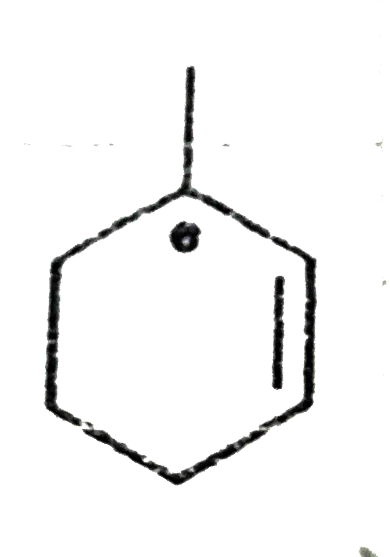What are free radicals ? Discuss their configuration.
Step-by-Step Solution
Step 1: Definition of Free Radicals
Free radicals are defined as atoms, molecules, or ions that have unpaired valence electrons. This means that they possess at least one electron in their outer shell that is not paired with another electron.
Step 2: Characteristics of Free Radicals
- Free radicals can be formed from various chemical reactions, especially those involving the breaking of covalent bonds.
- They are highly reactive due to the presence of unpaired electrons, which makes them seek out other electrons to pair with.
- Most molecules typically have an even number of electrons, leading to paired electrons, while free radicals disrupt this pattern.
Step 3: Configuration of Free Radicals
The configuration of free radicals refers to the arrangement of electrons in the outer shell.
- In a free radical, the outer electron shell contains unpaired electrons.
- For example, in the hydroxyl radical (•OH), the oxygen atom has six valence electrons, and one of its electrons is unpaired, leading to its radical nature.
Step 4: Examples of Free Radicals
Common examples of free radicals include:
- Hydroxyl radical (•OH)
- Methyl radical (•CH₃)
- Peroxyl radical (ROO•)
These radicals can participate in various chemical reactions, often leading to chain reactions in organic chemistry.
Free radicals are defined as atoms, molecules, or ions that have unpaired valence electrons. This means that they possess at least one electron in their outer shell that is not paired with another electron.
- Free radicals can be formed from various chemical reactions, especially those involving the breaking of covalent bonds.
- They are highly reactive due to the presence of unpaired electrons, which makes them seek out other electrons to pair with.
- Most molecules typically have an even number of electrons, leading to paired electrons, while free radicals disrupt this pattern.
The configuration of free radicals refers to the arrangement of electrons in the outer shell.
- In a free radical, the outer electron shell contains unpaired electrons.
- For example, in the hydroxyl radical (•OH), the oxygen atom has six valence electrons, and one of its electrons is unpaired, leading to its radical nature.
Common examples of free radicals include:
- Hydroxyl radical (•OH)
- Methyl radical (•CH₃)
- Peroxyl radical (ROO•)
Topper's Solved these Questions
- ORGANIC CHEMISTRY-SOME BASIC PRINCIPLES TECHNIQUESBOOK - PRADEEPCHAPTER - ORGANIC CHEMISTRY-SOME BASIC PRINCIPLES TECHNIQUESEXERCISE - Additional Questions (Long Answer Type Questions)
10 Videos
- ORGANIC CHEMISTRY-SOME BASIC PRINCIPLES TECHNIQUESBOOK - PRADEEPCHAPTER - ORGANIC CHEMISTRY-SOME BASIC PRINCIPLES TECHNIQUESEXERCISE - Analytical Questions and Problems with Answers/Solutions (Questions)
16 Videos
- ORGANIC CHEMISTRY-SOME BASIC PRINCIPLES TECHNIQUESBOOK - PRADEEPCHAPTER - ORGANIC CHEMISTRY-SOME BASIC PRINCIPLES TECHNIQUESEXERCISE - Additional Questions (Very short Answer Questions)
41 Videos
- HYDROGEN BOOK - PRADEEPCHAPTER - HYDROGEN EXERCISE - COMPETITION FOCUS (Assertion-Reason Type Questions) Type 2
15 Videos
- P-BLOCK ELEMENTS (NITROGEN FAMILY)BOOK - PRADEEPCHAPTER - P-BLOCK ELEMENTS (NITROGEN FAMILY)EXERCISE - Competition focus jee(main and advanced)/ medical entrance special) (VIII. Assertion-Reason Type Questions)
10 Videos
Similar Questions
Knowledge Check
The least stable free radical is
ACH3⋅CH2BCH3CH2⋅CH2C(CH3)2⋅CHD⋅CH3The most stable free radical is
AC6H5−C6H5∣C∘∣C6H5BCH3−CH3∣C∘∣CH3CCH3CH2CH∘CH3DCH3CH2CH2C∘H2The most stable free radical is
A B
B C
C D
D
